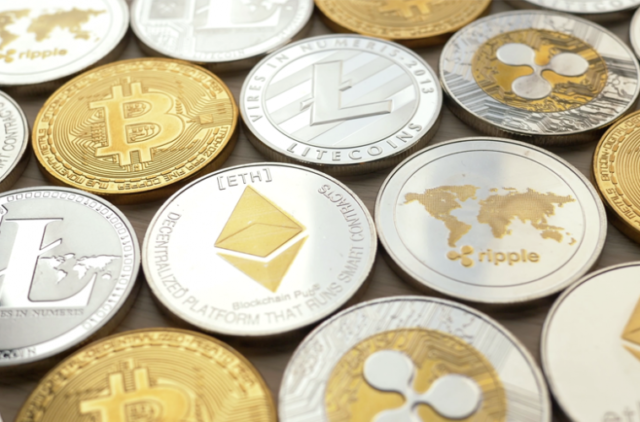- EUR/USD reaches 1,1744, the highest level since September 2021, before going back to 1,1697.
- Trump could replace Powell for autumn, feeding uncertainty in politics.
- Mixed US data limit the strength of the dollar; of the ECB Guindos points out a possible relief in commercial changes.
The EUR/USD shoots almost maximum of four years on Thursday, extending its rally to five consecutive days, with the torque exceeding the figure of 1,1700 for the first time since September 2021. The expectations that the Federal Reserve (FED) would reduce the rates before expected pushed the annual maximum pair of 1,174, before going back to 1,1697 0.33%.
The US dollar is still pressed due to news related to the Fed, since an article of the Wall Street Journal (WSJ) revealed that the US president, Donald Trump, is considering nominating some of his defenders to be the next president of the Fed, replacing Jerome Powell, whose mandate ends in May 2026.
The idea arose since Trump’s anger towards Powell’s reluctance to cut rates could cause an early advertisement during the summer.
The US economic agenda revealed a data set. Initial unemployment applications were lower than estimates, while requests for lasting goods in May were shot. However, the economy contracted as expected, since the Gross Domestic Product (GDP) did not meet the estimates.
The president of Boston’s Fed, Susan Collins, joined the hawk choir, saying that there were not enough data available in July to determine if the rates should be cut. Thomas Barkin de Richmond added his name to the list, stating that the FED policy is well positioned, since inflation would increase due to tariffs imposed by the Trump administration.
On the other side of the Atlantic, Luis de Guindos del ECB said that future policy decisions will be guided by the evolution of commercial dynamics, opening the door to additional feat cuts.
What moves the market today: augmented expectations of cutting of the Fed in July drive the EUR/USD
- The main advance of the EUR/USD on Wednesday is due to the general weakness of the US dollar. The dollar (DXY) index, which tracks the value of the dollar value against a basket of rivals, collapsed 0.41% to 97.31, after reaching a minimum of three and a half years of 96.99.
- The initial applications of unemployment subsidy fell to 236,000 for the week that ended on June 21, exceeding both the previous figure of 245,000 and market expectations, according to the US Department of Labor of the US.
- Surprisingly, orders for durable goods shot 16.4% in May, almost doubled the expected increase of 8.5%, mainly due to an increase in orders for commercial airplanes. The jump marks a strong rebound with respect to the fall of 6.6% of April.
- On the negative side, the Office of Economic Analysis (BEA) reviewed its estimation of the GDP of Q1 2025, showing a contraction greater than 0.5% quarter to quarter, compared to the fall of 0.2% previously reported, aligning with the expectations of the analysts.
- Monetary markets suggest that operators are discounting 59 basic relief points towards the end of the year, according to Prime Market Terminal data.
EURO TECHNICAL PERSPECTIVE: EUR/USD continues binders with buyers pointing at 1,1800 as the next resistance
The EUR/USD bullish trend remained intact on Thursday, after exceeding the key resistance in 1,1700, but closed the day below this level. The Relative Force Index (RSI) is approaching the territory of overcompra, but due to the strength of the trend, the most extreme reading is currently in 80.
The failure in achieving a daily closure above 1,1700 opened the door to an EUR/USD setback. The first support would be the maximum of June 12, 1,1631, followed by 1,1600. A rupture of this last will expose the 20 -day SMA in 1,1514. On the contrary, if the EUR/USD rises above 1,1700, the first resistance would be a maximum of several years in 1,1744. Once surpassed, the next demand area would be 1,1800.

Euro Faqs
The euro is the currency of the 19 countries of the European Union that belong to the Eurozone. It is the second most negotiated currency in the world, behind the US dollar. In 2022, it represented 31 % of all foreign exchange transactions, with an average daily business volume of more than 2.2 billion dollars a day. The EUR/USD is the most negotiated currency pair in the world, with an estimate of 30 %of all transactions, followed by the EUR/JPY (4 %), the EUR/GBP (3 %) and the EUR/AU (2 %).
The European Central Bank (ECB), based in Frankfurt (Germany), is the Eurozone reserve bank. The ECB establishes interest rates and manages monetary policy. The main mandate of the ECB is to maintain price stability, which means controlling inflation or stimulating growth. Its main tool is the rise or decrease in interest rates. Relatively high interest rates (or the expectation of higher types) usually benefit the euro and vice versa. The GOVERNMENT BOOK of the ECB makes decisions about monetary policy in meetings that are held eight times a year. The decisions are made by the directors of the National Banks of the Eurozone and six permanent members, including the president of the ECB, Christine Lagarde.
Eurozone inflation data, measured by the harmonized consumer prices index (IPCA), are an important economic indicator for the euro. If inflation increases more than expected, especially if it exceeds 2% of the ECB, it forces the ECB to rise interest rates to control it again. Relatively high interest rates compared to their counterparts usually benefit the euro, since they make the region more attractive as a place for global investors to deposit their money.
Published data measure the health of the economy and can have an impact on the euro. Indicators such as GDP, manufacturing and services PMIs, employment and consumer trust surveys can influence the direction of the single currency. A strong economy is good for the euro. Not only attracts more foreign investment, but it can encourage the ECB to raise interest rates, which will directly strengthen the euro. Otherwise, if economic data is weak, the euro is likely to fall. The economic data of the four largest economies in the euro zone (Germany, France, Italy and Spain) are especially significant, since they represent 75% of the economy of the euro area.
Another important fact that is published on the euro is the commercial balance. This indicator measures the difference between what a country earns with its exports and what you spend on imports during a given period. If a country produces highly demanded export products, its currency will gain value simply by the additional demand created by foreign buyers seeking to buy those goods. Therefore, a positive net trade balance strengthens a currency and vice versa in the case of a negative balance
Source: Fx Street
I am Joshua Winder, a senior-level journalist and editor at World Stock Market. I specialize in covering news related to the stock market and economic trends. With more than 8 years of experience in this field, I have become an expert in financial reporting.







